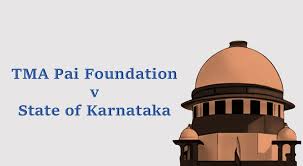Supreme Court Examines Government Policies on Wildlife Protection in National Parks: A Legal Overview
- ByAdmin --
- 03 Jun 2025 --
- 0 Comments
The Supreme Court of India has recently undertaken a critical review of government policies concerning wildlife protection in national parks. This scrutiny highlights the urgent need for balancing ecological preservation with developmental interests, ensuring constitutional mandates are met, and reinforcing legislative frameworks that safeguard biodiversity.
Background
India’s rich biodiversity is protected under a robust legal framework that includes constitutional provisions, specific wildlife laws, and international commitments. National parks are key instruments for conserving wildlife habitats, and government policies directly impact their effectiveness.
The Supreme Court’s examination arises from public interest litigations and environmental concerns raised over encroachments, poaching, habitat destruction, and insufficient enforcement of wildlife laws within these protected areas.
Constitutional Provisions on Wildlife Protection
- Article 48A
Part IV of the Indian Constitution, the Directive Principles of State Policy, mandates the State to “protect and improve the environment and to safeguard the forests and wildlife of the country.” Though not enforceable by courts, this Article lays a fundamental responsibility on the government to frame effective conservation policies.
- Article 51A(g)
This Fundamental Duty imposes on every citizen the duty “to protect and improve the natural environment including forests, lakes, rivers, and wildlife.” The judiciary often invokes this Article to urge stricter compliance with environmental laws.
Relevant Wildlife Legislation
India has enacted several laws aimed at protecting wildlife, especially within national parks:
- The Wildlife (Protection) Act, 1972
This is the principal statute governing wildlife conservation. It prohibits hunting of wild animals, regulates trade in wildlife products, and establishes protected areas including national parks and sanctuaries. Sections 18 and 35 specifically provide the framework for declaring national parks and the powers of forest officers to enforce protection.
- The Forest Conservation Act, 1980
It restricts the diversion of forest land for non-forest purposes, requiring prior approval from the central government. This act is vital to prevent illegal encroachment and maintain ecological balance within national parks.
- The Environment (Protection) Act, 1986
Empowering the central government to take measures for environmental protection, this Act is often used to regulate activities affecting wildlife habitats.
Supreme Court’s Role and Judicial Pronouncements
The Supreme Court has been proactive in environmental jurisprudence, and its examination of wildlife policies underscores its commitment to protecting biodiversity:
- In T. N. Godavarman Thirumulpad v. Union of India (1996), the Court emphasized the “precautionary principle” and “sustainable development” as guiding tools in wildlife and forest protection.
- The Court has repeatedly ordered stricter implementation of the Wildlife Protection Act, particularly in cases where illegal mining, deforestation, or developmental activities threaten national parks.
- It has mandated the establishment of eco-sensitive zones around protected areas to buffer the impact of human activities.
Government Policies Under Scrutiny
The Supreme Court’s examination focuses on several government policies impacting national parks, including:
- Regulation of Tourism and Commercial Activities:
Balancing eco-tourism with conservation is a challenge. The Court reviews policies permitting tourism infrastructure in and around national parks, ensuring these do not degrade wildlife habitats or disrupt ecological balance.
- Forest Rights and Land Use:
Implementation of the Forest Rights Act, 2006, which recognizes the rights of indigenous communities, is closely monitored to ensure it aligns with conservation goals without displacing traditional forest dwellers unjustly.
- Anti-Poaching Measures and Wildlife Crime Control:
Policies on anti-poaching patrols, surveillance, and prosecution are critical. The Court evaluates government commitment to funding and manpower for enforcement agencies like the Forest Department and Wildlife Crime Control Bureau.
Challenges Highlighted by the Court
- Encroachment and Illegal Land Use:
Despite laws, illegal encroachments remain rampant in some national parks, weakening their ecological integrity.
- Policy Implementation Gaps:
Often, policies exist on paper but lack effective implementation due to bureaucratic delays or inadequate resources.
- Conflict Between Development and Conservation:
Infrastructure projects such as highways, dams, and mining near protected areas have been contentious, with the Court emphasizing environmental impact assessments and compliance with clearance procedures.
Way Forward: Strengthening Wildlife Protection Framework
In light of the Supreme Court’s review, several recommendations emerge for the government and policymakers:
- Enhanced Monitoring and Transparency:
Use of technology such as GIS mapping and CCTV surveillance to track wildlife movements and illegal activities.
- Community Participation:
Involving local communities in conservation efforts through joint forest management and eco-development committees.
- Policy Coherence:
Harmonizing various laws and policies to avoid conflicts and ensure comprehensive protection.
- Strict Enforcement and Accountability:
Ensuring penal action against violators of wildlife laws and timely prosecution.
Conclusion
The Supreme Court’s examination of government policies on wildlife protection in national parks reaffirms the judiciary’s pivotal role in safeguarding India’s natural heritage. Through its interpretations of constitutional mandates and wildlife legislation, the Court underscores the necessity for proactive, transparent, and stringent policies that reconcile ecological needs with social and economic development.
Continued vigilance, robust legal frameworks, and community engagement are vital for the preservation of India’s biodiversity for future generations.
































































































































































































































































































































































































































































































































































































































































































































































































































































































































0 comments